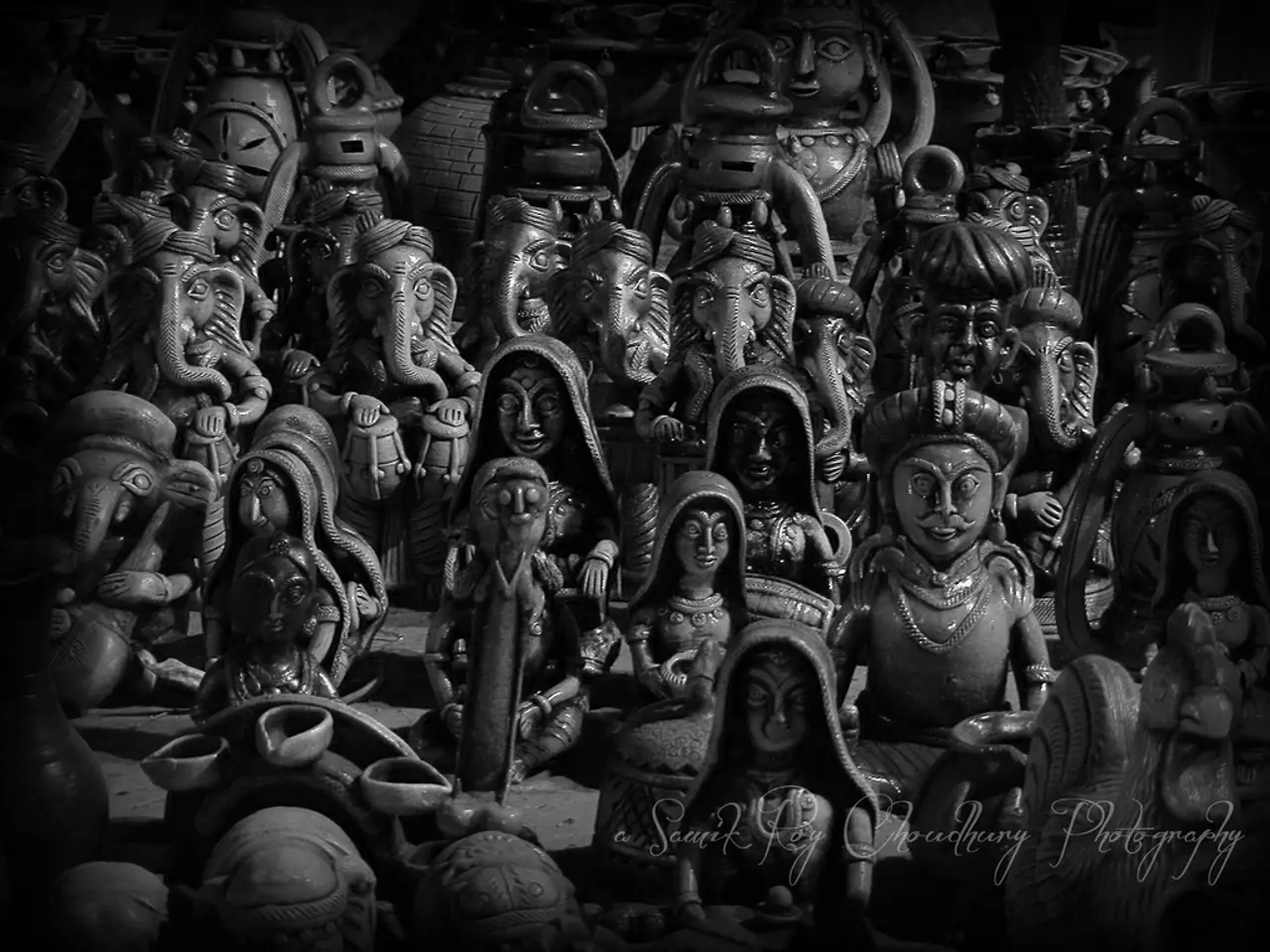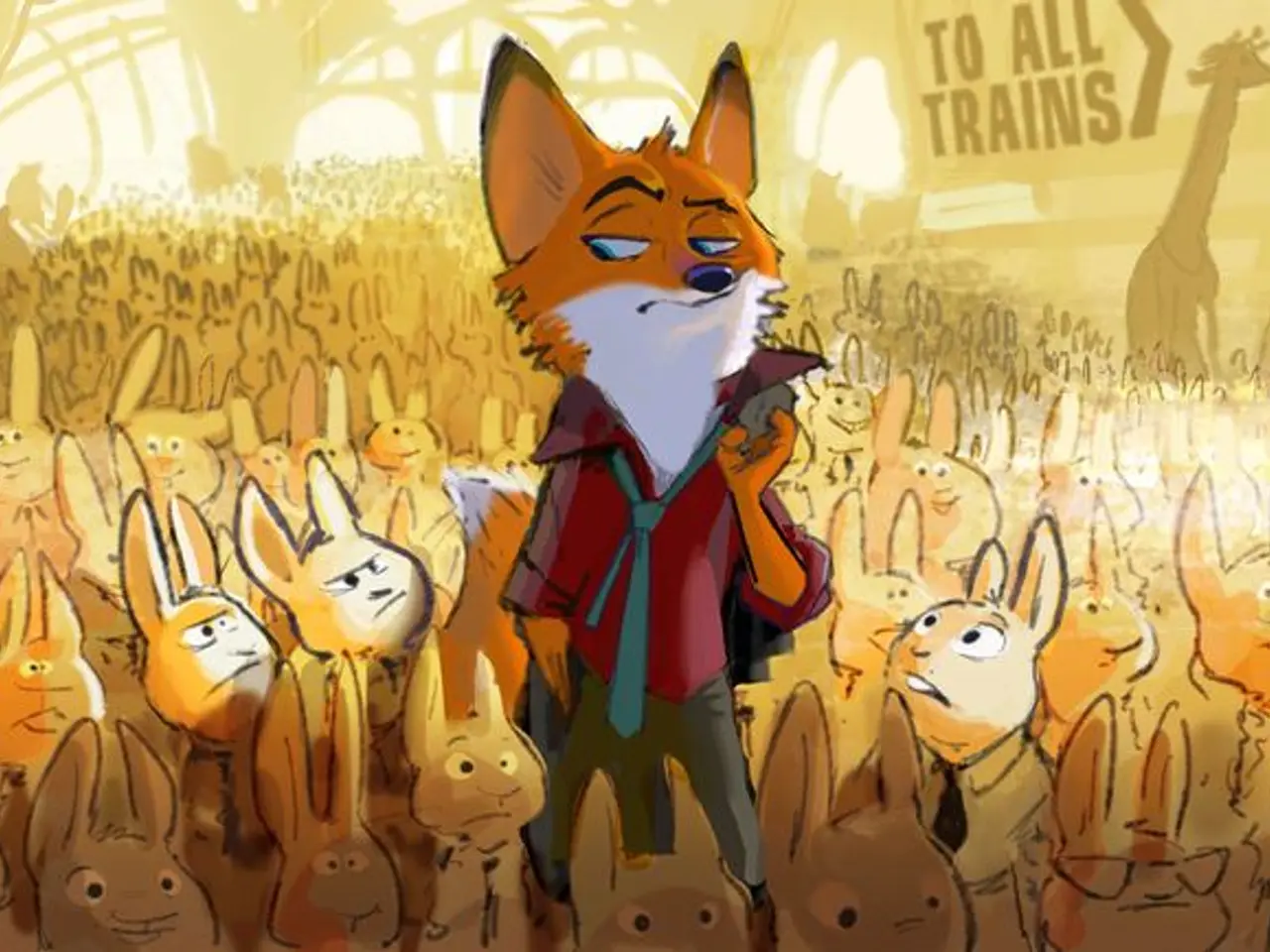Indian Cinema's Top Picks: Timeless Favorites Ranging from Classic to Modern Masterpieces
In the vibrant world of Indian cinema, films have been captivating audiences for generations, exploring universal themes, showcasing iconic characters, and pushing the boundaries of filmmaking. From regional gems like Jai Bhim (Tamil) and RRR (Telugu) to acclaimed productions such as Pather Panchali, Mother India, Sholay, Lagaan, DDLJ, and Sardar Udham, these cinematic masterpieces have left an indelible mark on the cultural landscape.
These timeless films share key elements that make them culturally significant and universally appealing. Powerful storytelling, emotional resonance, cultural relevance, iconic characters, memorable music, and innovative filmmaking techniques are the cornerstones of these cinematic gems.
Powerful storytelling is evident in films that tackle social and moral dilemmas, such as Shree 420 (1955) and Mother India (1957,) which resonate with audiences by addressing real-life issues. Movies like Mayabazar seamlessly blend myth, fantasy, romance, and humor, creating timeless narratives that captivate audiences for years to come.
Emotional resonance is another key element, as seen in romantic classics like Mughal-e-Azam and Dilwale Dulhania Le Jayenge (DDLJ.) These films have remained beloved for generations due to their emotional depth and exploration of love as a universal theme. Actors like Shah Rukh Khan and Aamir Khan have defined Bollywood romance with their nuanced portrayals of heroes, making their characters relatable and memorable.
Cultural relevance is another hallmark of great Indian films. Quotes like "Mogambo khush hua" from Mr. India have become embedded in Indian pop culture, symbolizing the lasting impact of these films on society. Modern love stories now incorporate emotional nuance and cultural shifts, adapting to changing audience preferences while staying relevant.
Iconic characters like Mogambo in Mr. India or Gabbar Singh in Sholay are memorable, providing viewers with unforgettable personas that have become part of cultural lore. Classics like Mayabazar inspire new generations of filmmakers, ensuring their influence continues over time.
Memorable music is another element that sets these films apart. Movies like Mr. India and Mughal-e-Azam are famous for their memorable soundtracks, which remain popular even today. Songs often convey cultural values or themes that resonate deeply with audiences, contributing to the films' enduring appeal.
Innovative filmmaking techniques have also played a crucial role in the success of these films. Mayabazar showcased innovative special effects for its time, making it a landmark in Indian cinema. Films like Sholay and Lagaan have successfully adapted or reinterpreted traditional themes using modern storytelling techniques, ensuring their relevance to contemporary audiences.
These elements combined have helped make many Indian films timeless classics, continuing to inspire new generations of filmmakers and captivate diverse audiences. Whether it's the gritty realism of Jai Bhim or the epic spectacle of RRR, these films remind us of the power of storytelling and the enduring allure of Indian cinema.
- Indian movies, such as Mayabazar, expertly blend elements of fantasy, romance, and comedy, crafting timeless narratives that captivate viewers for years, embodying the innovative filmmaking techniques that have positioned Indian cinema as a cultural force.
- The realm of entertainment extends beyond the borders of India, with productions like Mother India and Shree 420 providing insightful commentary on social and moral dilemmas, resonating with audiences worldwide due to their powerful storytelling.
- In addition, romantic classics, like Dilwale Dulhania Le Jayenge, offer emotional depth and explore love as a universal theme, making them cherished productions across multiple generations.
- Iconic characters like Mogambo from Mr. India and Gabbar Singh from Sholay have become embedded in Indian pop culture, their unforgettable personas immortalized within the annals of cinema history.







